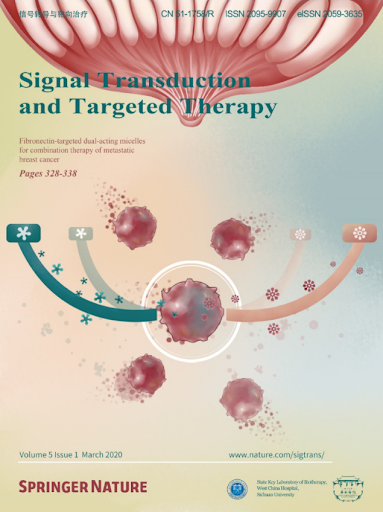Ninjurin-1 mediates cell lysis and detrimental inflammation of PANoptosis during influenza A virus infection.
IF 52.7
1区 医学
Q1 BIOCHEMISTRY & MOLECULAR BIOLOGY
引用次数: 0
Abstract
Influenza A virus (IAV) induces ZBP1-mediated PANoptosis, a form of lytic inflammatory cell death characterized by concurrent activation of the pyroptosis, necroptosis and apoptosis pathways. Ninjurin-1 (NINJ1) is a recently identified mediator of plasma membrane rupture but functions diversely in different types of cell death. However, little is known about the role of NINJ1 in IAV-induced PANoptosis and viral pneumonia. Here, we report that IAV infection triggered an increase in the expression of NINJ1, which then oligomerized and mediated cell lysis in infected macrophages. The deficiency of NINJ1 prevented plasma membrane rupture and the release of DAMPs and IL-1β without affecting the progression of cell death. Activation of any single PANoptosis pathway was sufficient to trigger the oligomerization of NINJ1 and robust cell lysis. Accordingly, only when all PANoptosis pathways were concurrently blocked could the oligomerization of NINJ1, cell death, and cell rupture be prevented. Ablation of NINJ1 in vivo also alleviated IAV-induced lung injury and mortality. Furthermore, we revealed an association between NINJ1 upregulation and poor outcomes in patients with COVID-19. Collectively, our findings indicate a pivotal role of NINJ1 in the immunopathology of IAV infection and its potential as a bioindicator of disease severity and prognosis in viral pneumonia and viral sepsis.忍素-1介导甲型流感病毒感染时PANoptosis的细胞裂解和有害炎症。
甲型流感病毒(IAV)诱导zbp1介导的PANoptosis,这是一种溶解性炎症细胞死亡的形式,其特征是同时激活焦亡、坏死和凋亡途径。Ninjurin-1 (Ninjurin-1)是最近发现的一种质膜破裂介质,但在不同类型的细胞死亡中起不同的作用。然而,我们对NINJ1在iav诱导PANoptosis和病毒性肺炎中的作用知之甚少。在这里,我们报道了IAV感染引发了NINJ1表达的增加,然后在感染的巨噬细胞中寡聚化并介导细胞裂解。ninb1的缺乏阻止了质膜破裂和DAMPs和IL-1β的释放,而不影响细胞死亡的进展。任何单一PANoptosis通路的激活都足以触发NINJ1的寡聚化和强大的细胞裂解。因此,只有同时阻断所有PANoptosis通路,才能防止NINJ1的寡聚化、细胞死亡和细胞破裂。体内消融NINJ1也可减轻iav诱导的肺损伤和死亡率。此外,我们还发现了NINJ1上调与COVID-19患者预后不良之间的关联。总之,我们的研究结果表明,NINJ1在IAV感染的免疫病理中起关键作用,并可能作为病毒性肺炎和病毒性败血症疾病严重程度和预后的生物指标。
本文章由计算机程序翻译,如有差异,请以英文原文为准。
求助全文
约1分钟内获得全文
求助全文
来源期刊

Signal Transduction and Targeted Therapy
Biochemistry, Genetics and Molecular Biology-Genetics
CiteScore
44.50
自引率
1.50%
发文量
384
审稿时长
5 weeks
期刊介绍:
Signal Transduction and Targeted Therapy is an open access journal that focuses on timely publication of cutting-edge discoveries and advancements in basic science and clinical research related to signal transduction and targeted therapy.
Scope: The journal covers research on major human diseases, including, but not limited to:
Cancer,Cardiovascular diseases,Autoimmune diseases,Nervous system diseases.
 求助内容:
求助内容: 应助结果提醒方式:
应助结果提醒方式:


